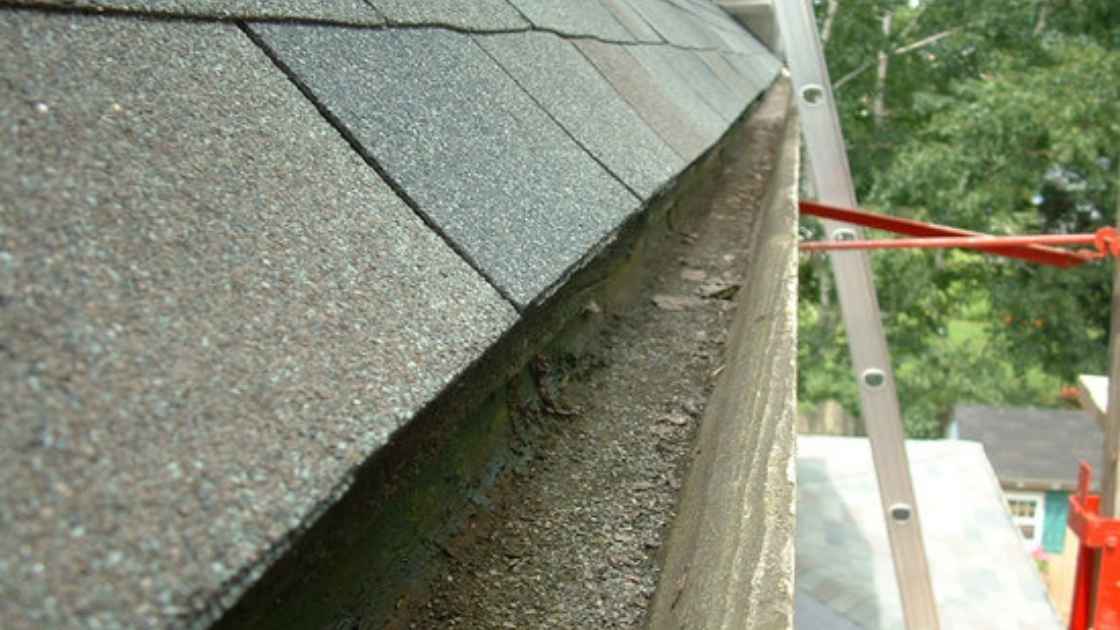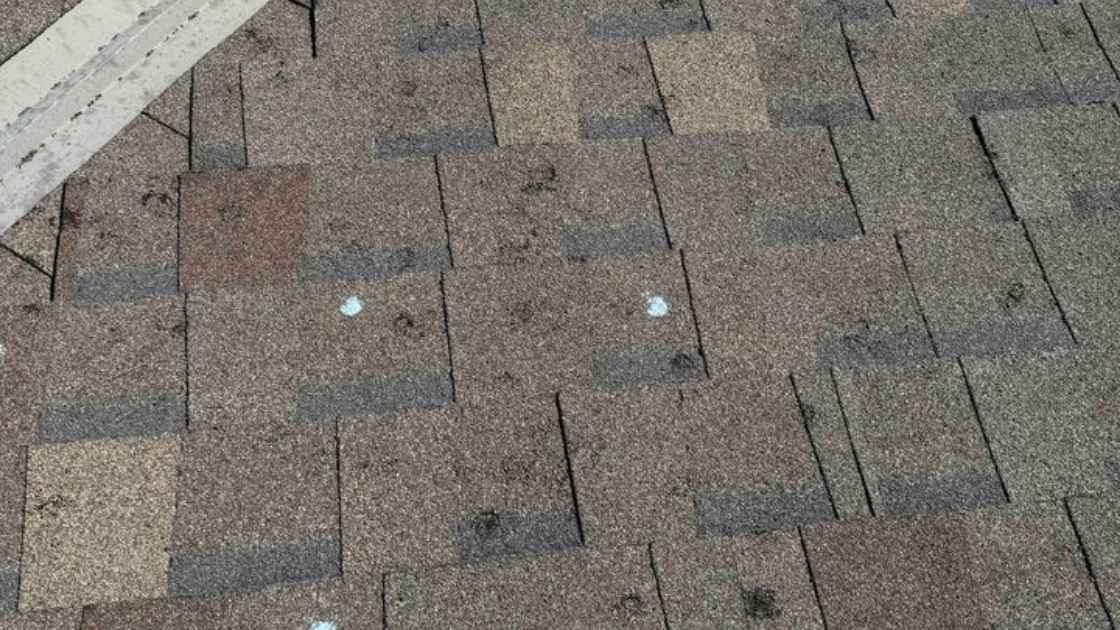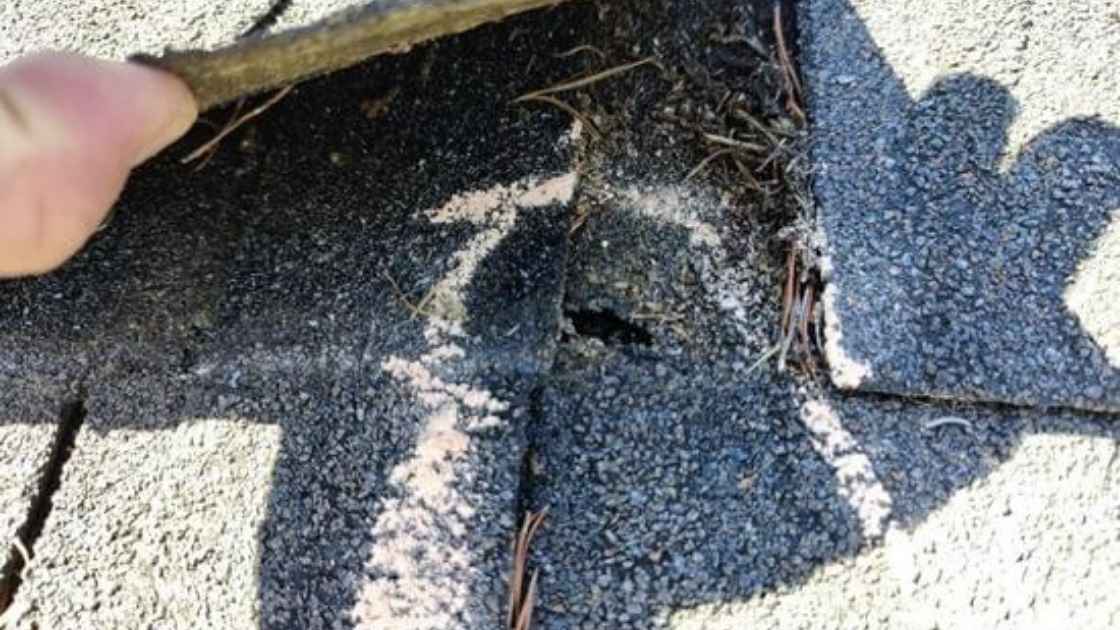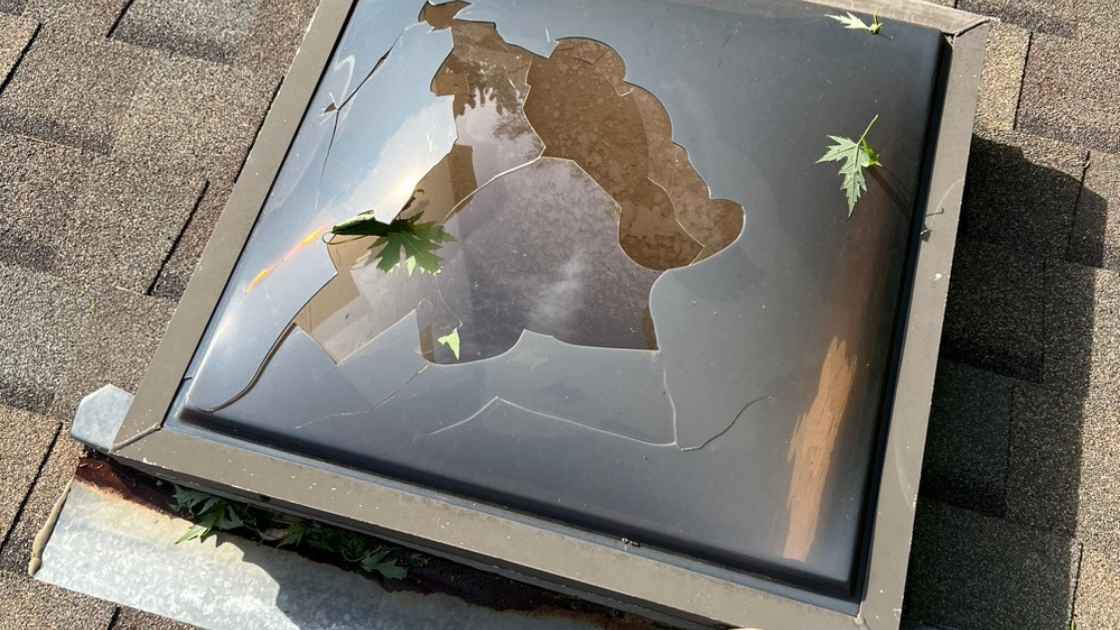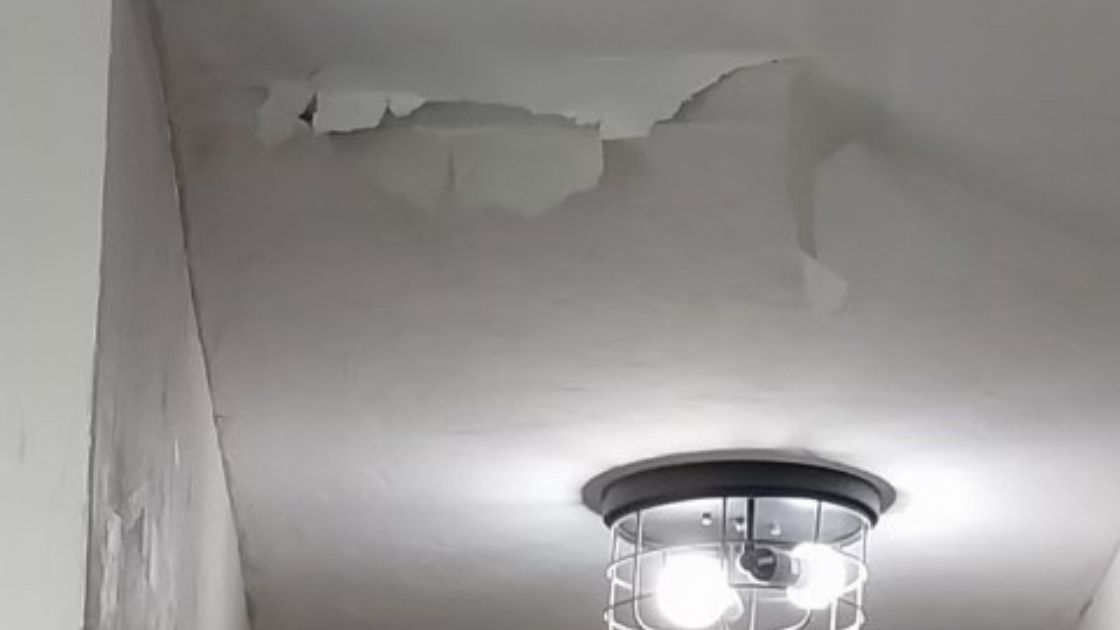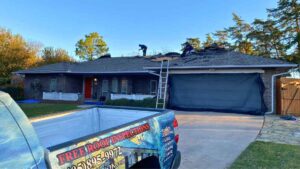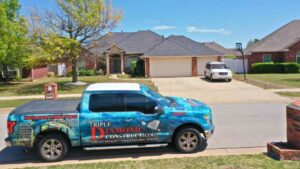If you’re a homeowner in Oklahoma, you’re likely no stranger to the threat of severe weather. With the recent hailstorm that hit the area on September 24, 2024, many residents are now left wondering if their homes have sustained damage. But not all hail damage is obvious—some of it can be hidden, making it even more important to get a professional inspection.
Why should homeowners be on the lookout for hidden signs of hail damage? Storm damage to a roof can’t be seen from the ground!
Not sure what to look for? Keep reading to learn the five hidden signs of hail damage that every homeowner should know. By understanding these indicators, you’ll be better equipped to protect your investment and make informed decisions about necessary repairs.
1. Granule Loss on Asphalt Shingles
One of the most common yet hidden signs of hail damage is granule loss on asphalt shingles. Granules are the small, rough particles that cover the surface of your shingles, giving them their texture and color. They serve an important function by protecting your shingles from UV rays and providing fire resistance.
After a hailstorm, you may notice small piles of granules in your gutters or around the downspouts of your home. This is a red flag that your shingles have been damaged. When hail impacts the roof, it can dislodge these granules, leaving the underlying asphalt layer exposed. Over time, this can lead to premature aging of the shingles and an increased likelihood of leaks.
What to Look For:
- Granules collecting in gutters or on the ground around your home
- Shiny or darker areas on the roof where granules have been knocked off
- Smooth or bald spots on shingles
Older hail damage is easier to see with binoculars from the ground level of your home. As the shingle granules wear off, the felt matting is exposed to UV rays. Over time, the patches get larger and the felt matting gets shiny. If you notice any of these signs, it’s important to schedule a professional inspection to assess the extent of the damage!
2. Dented Gutters, Downspouts, and Flashing
Another hidden sign of hail damage is dented gutters, downspouts, and metal flashing. While these elements aren’t part of your roof, they play a crucial role in protecting your home from water damage by directing water away from your foundation and preventing leaks around roof penetrations.
Hailstones can leave small, often hard-to-see dents in metal components, which can disrupt the flow of water and lead to drainage issues. If left unaddressed, damaged gutters and downspouts can cause water to pool around your home’s foundation, leading to soil erosion, basement leaks, and even foundation damage.
If your home’s gutters have signs of hail damage, it’s often safe to assume your roof does too!
What to Look For:
- Small dimples or dents in gutters and downspouts
- Scratched or chipped paint on metal flashing
- Bent or misshapen gutter segments
To check for this type of damage, run your hand along the gutters and flashing to feel for any irregularities that may not be visible from a distance.
3. Cracked or Damaged Shingles
While large cracks or missing shingles are easy to spot, hairline cracks and minor damage can go unnoticed without a close inspection. Hailstones hitting at high speeds can cause micro-cracks or fractures in shingles that may not be visible from the ground. These cracks weaken the structural integrity of your roof and can lead to serious issues that get worse over time.
Cracked shingles are more prone to breakage during subsequent storms and may not provide the same level of protection against leaks and moisture penetration. These cracks can also expose the underlayment, which can deteriorate quickly when exposed to the elements. Often, seeing this type of roof damage means that the existing hail damage has progressively gotten worse and has likely been there for at least a year or more.
What to Look For:
- Small cracks or fractures in the surface of shingles
- Loose or lifted edges that aren’t sealed down properly
- Shingles that appear “bruised” or have a soft spot when pressed
This type of damage can only be seen while standing on the roof itself. Drones and other tools can also help! That can be dangerous for most homeowners who don’t have experience walking on a roof, or the proper shoes. If you suspect any of these issues, it’s crucial to have a roofing professional take a closer look and provide a detailed assessment.
4. Damage to Roof Vents and Skylights
Hail damage isn’t limited to shingles—it can also affect other roofing components like vents, skylights, and chimneys. Roof vents are often made of metal or plastic, both of which can be dented or cracked by hailstones. Similarly, the seals around skylights can be compromised, leading to water leaks inside your home.
Vents that have been impacted by hail may not function as effectively, potentially leading to ventilation problems that affect your home’s energy efficiency and comfort. Damaged skylights can allow water to seep in, resulting in mold growth and water stains on your ceiling.
What to Look For:
- Dented or cracked roof vents and chimney caps
- Loose or missing flashing around skylights
- Water stains or signs of moisture around skylights inside the home
Checking these elements after a storm is critical, as damage in these areas is often overlooked.
5. Interior Water Damage or Leaks
One of the most troubling hidden signs of hail damage is water leaks inside your home. If hail has caused cracks or weakened the roof’s protective layers, it can lead to slow leaks that you may not notice until they cause significant damage. Look for water stains, damp spots, or peeling paint on your ceiling or walls, especially in areas directly below the roofline.
Water damage inside the home can quickly escalate into mold growth, which poses health risks to you and your family. Additionally, prolonged moisture exposure can weaken structural components and lead to costly repairs.
What to Look For:
- Water stains or discoloration on ceilings or walls
- Damp spots or areas that feel soft to the touch
- Peeling paint or wallpaper in areas below the roofline
If you notice any of these signs, it’s a clear indication that water is getting into your home, likely due to storm damage.
Why You Should Schedule a Professional Roof Inspection
Hidden signs of hail damage can turn into serious issues that compromise your home’s safety and value. At Triple Diamond Construction, we offer free, no-obligation inspections to help you identify hidden damage and protect your investment.
Our expert team will assess every component of your roof and provide a detailed report on any damage found, helping you make informed decisions about repairs or replacements. Don’t wait until a small problem turns into a big one—contact us today to schedule your free inspection and keep your home safe for years to come.
Call us at 405-895-9972 or use our online scheduling tool to book your free inspection today!

